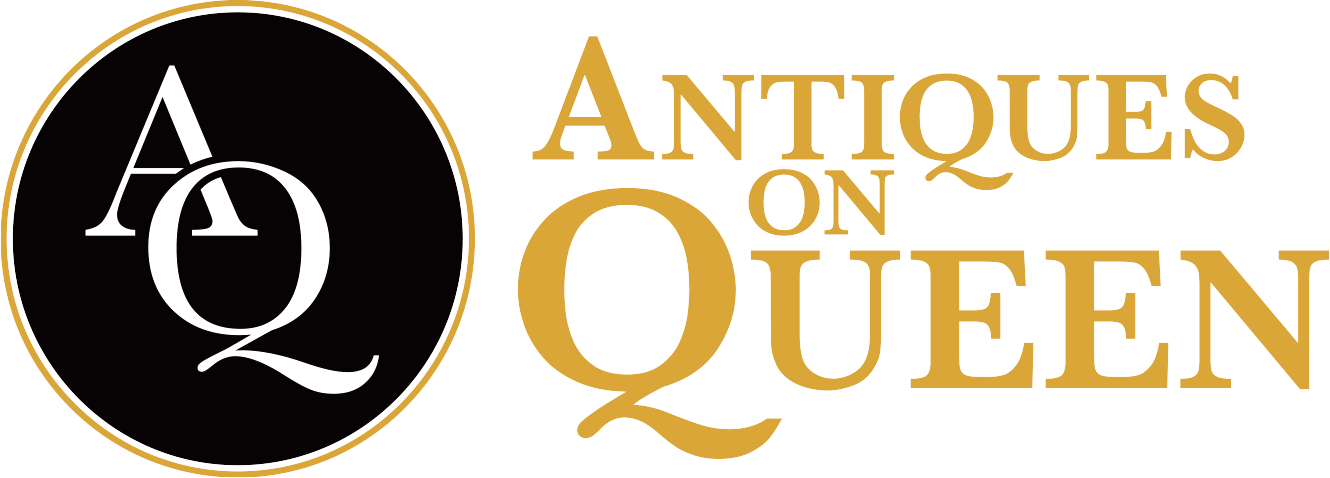A Cup of Tea with Guest Blogger Caitlin Kelly
Few drinks are as comforting and consoling as a cup of tea – watch any BBC television show, even the crime dramas, and someone is always putting the kettle on or offering a cuppa.
On the coldest and greyest of Canadian winter days, a pot of fragrant tea offers a soothing break, maybe Earl Grey or Irish Breakfast to start, a hearty pot of PG Tips at 4:00, or the smelly, tarry, smoky flavor of Lapsang Souchong. Not to mention herbal tisanes, infusions and green tea, said to be health-promoting, like this Ginger-Turmeric Wellness Tea from the Great Canadian Tea Company.
And while a sturdy mug is big and practical and warms both hands, I’m partial to using a vintage or antique delicate porcelain teacup, with a handle or an earlier, handle-less teabowl; teacup handles appeared in 1750, thanks to Robert Adam as holding a hot bowl was uncomfortable and too easy to drop. Antiques on Queen has a stunning array to choose from!
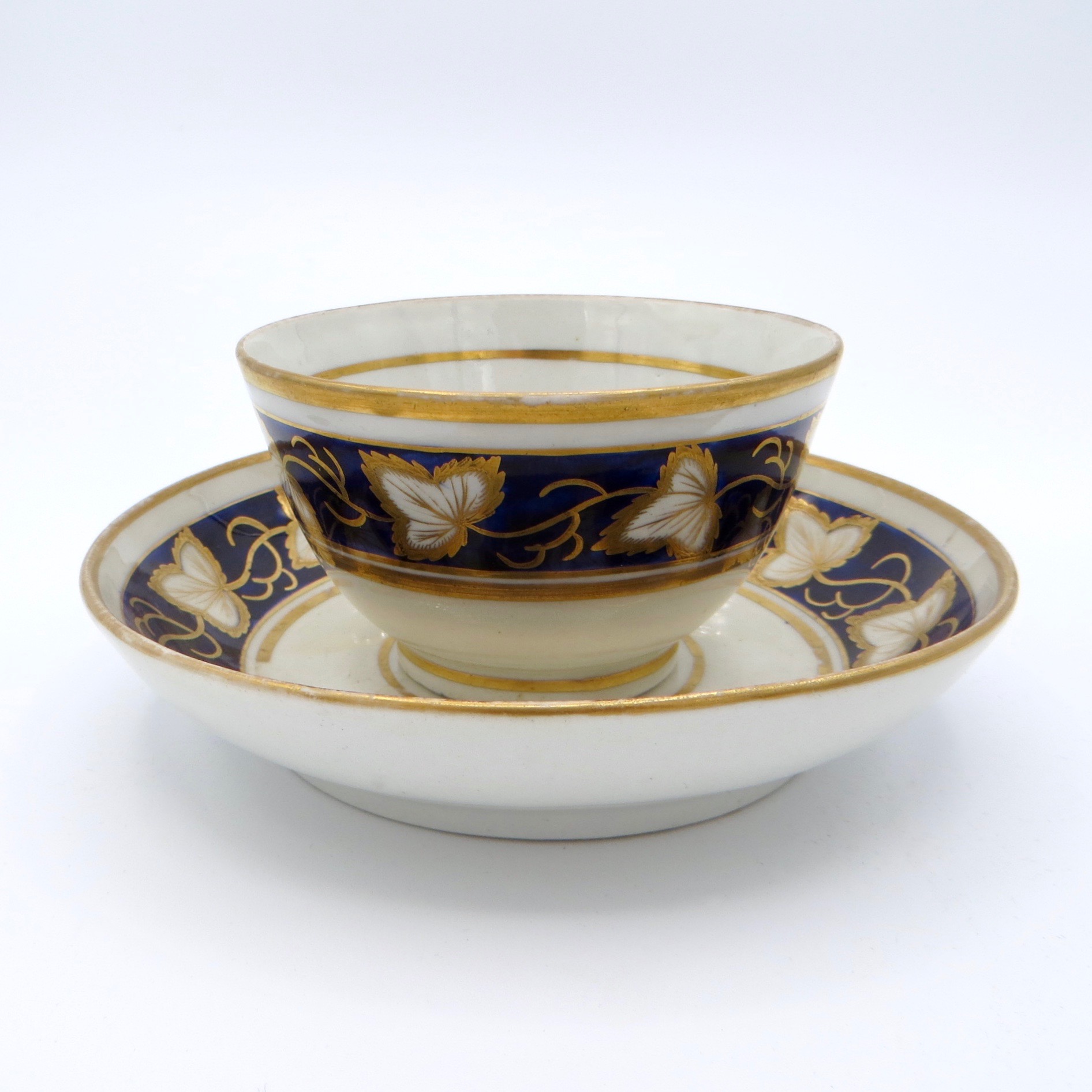
This handle-less tea bowl and saucer were common drinking vessels among the upper classes in England in the early 1800s.
I love the two 19th-century porcelain teacups I bought there and use them often — one white with emerald green edging and gold curlicues and the other, much smaller, white with pink luster decoration.
(If you’ve been to Morocco or Istanbul or Russia [and maybe elsewhere], you’ve probably also drunk tea from a small glass, as I did on my visit to the Grand Bazaar in Istanbul, spending a glorious solo day day looking at rugs and vintage textiles. And check out this stunning emerald-green tea tin for sale from Turkey, filled with green tea.)
Drinking tea, even if you’re not into a complete and formal Japanese tea ceremony, offers a natural respite in even the busiest day. No sad bag in a mug! Treating yourself to a lovely vintage or antique teapot, even a two-cup size, is so much more elegant and allows for the use of loose tea and infuser — I love this one, silver plate in the shape of a teapot (of course!) from London’s Fortnum & Mason, for $68.33.
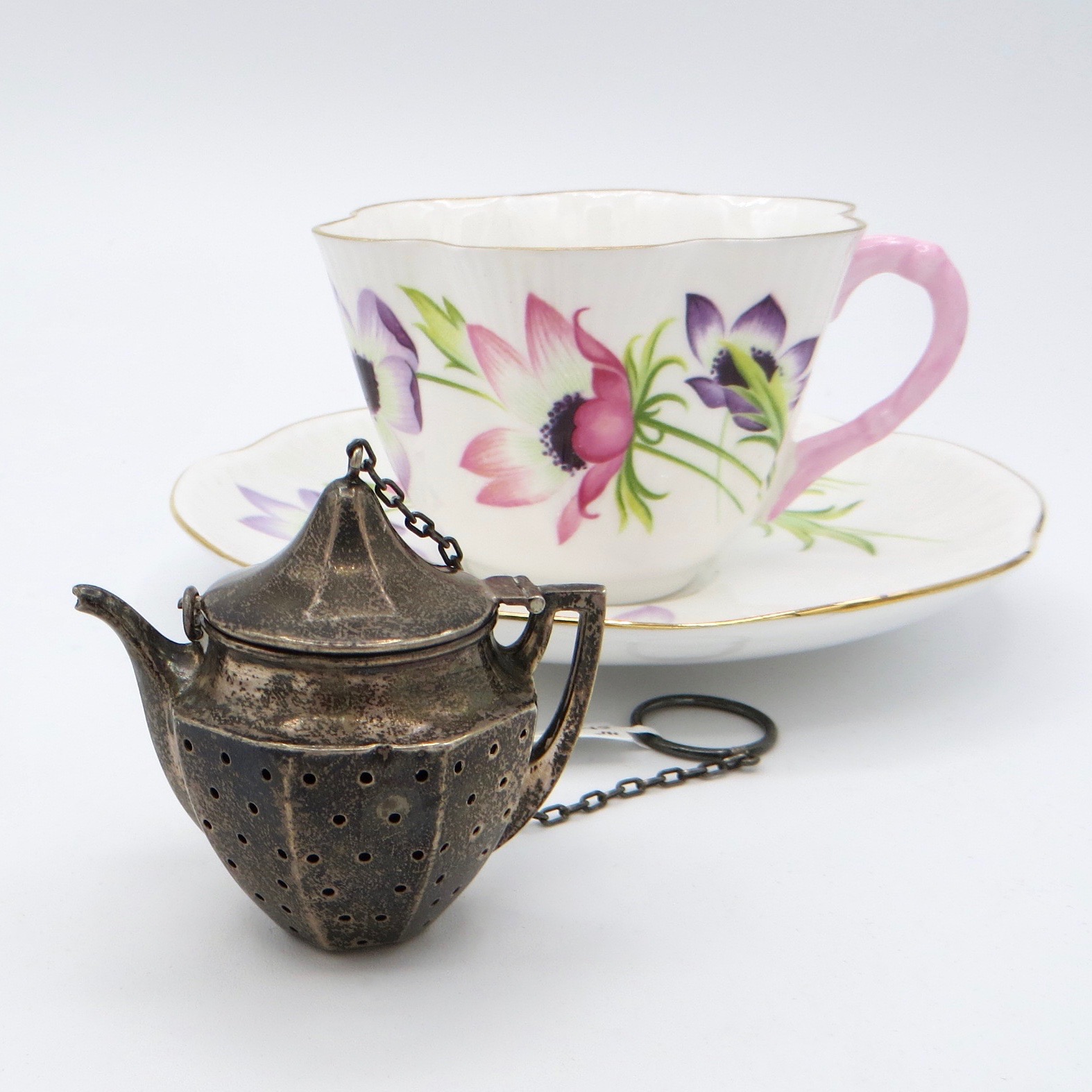
We often see figural tea infusers in the shop; this (somewhat tarnished!) sterling silver piece is in the form of a teapot.
Tea originated centuries ago in China, but like so many European fashions, it took royalty to make tea consumption worth emulating:
From the website of the UK Tea and Infusions Association:
It was the marriage of Charles II to Catherine of Braganza that would prove to be a turning point in the history of tea in Britain. She was a Portuguese princess, and a tea addict, and it was her love of the drink that established tea as a fashionable beverage first at court, and then among the wealthy classes as a whole. Capitalising on this, the East India Company began to import tea into Britain, its first order being placed in 1664 – for 100lbs of China tea to be shipped from Java.
Being an expensive imported luxury item, tea caddies and canisters to hold the precious stuff became an important accessory as well, whether made of silver or porcelain. I also have a gorgeous set of early 19th Century teacups, plates and matching teapot, the cups so small they need constant re-filling – a powerful reminder that, in the period, tea was very much a costly item.
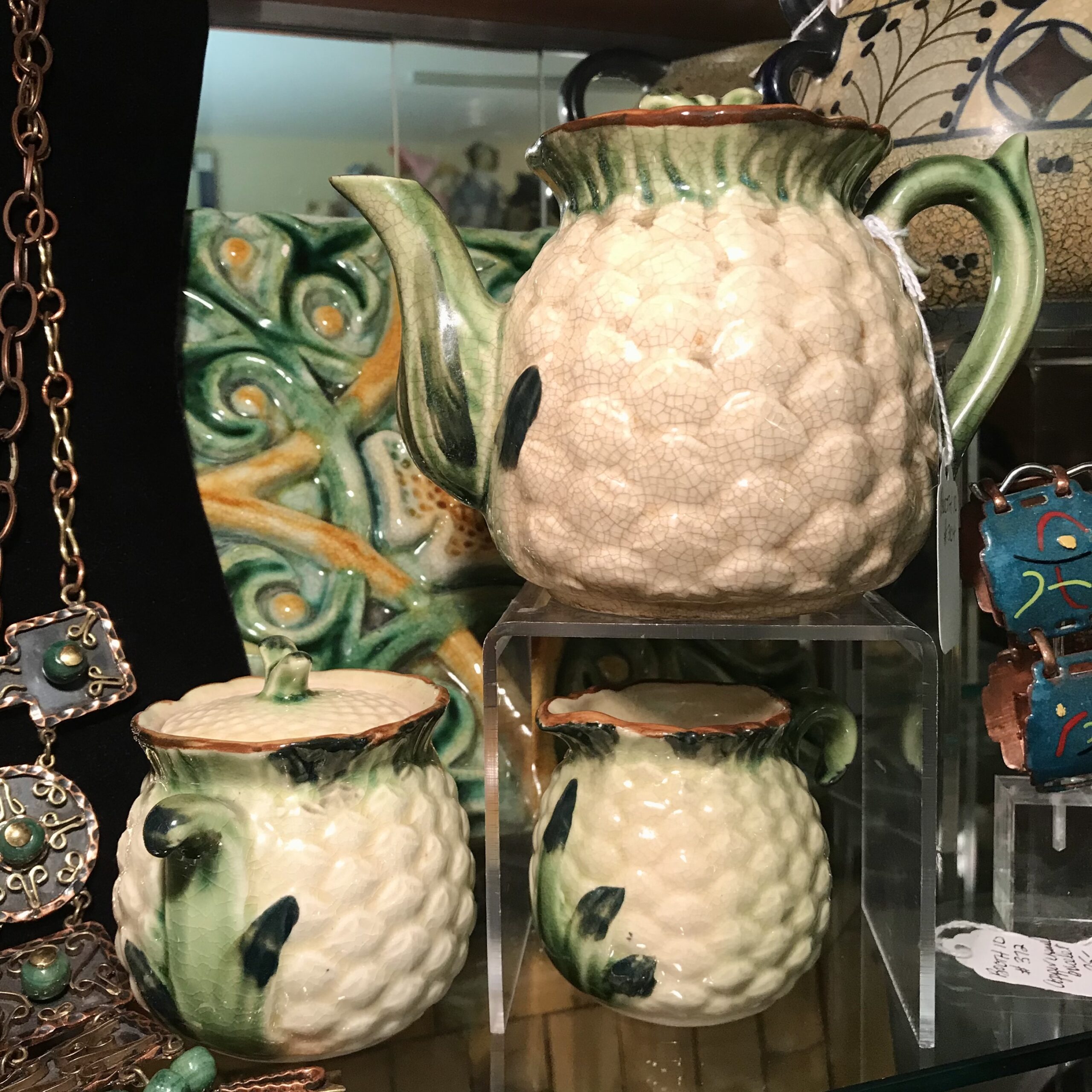
This set of teapot, cream and sugar takes the form of cauliflower. Pottery in the shape of fruits and vegetables was very popular at one time!
You can also trace porcelain design history through the changing shapes, sizes and designs of teacups and teapots. I treasure a straight-sided white teapot with a braided porcelain handle and narrow straight spout with a floral decoration, typical of the late 1700s — found for $3.50 in a junk shop, missing a lid – with one, it would have been worth $1,000. Some teapots of that period also come in squat round shapes, hand-painted, and some, imitating fashionable items of the era, look like pineapples or cabbages.
By the mid 19th-century, teacups had evolved from small cups without a handle to those with one, wider and larger, colorfully painted and many with curved handles – by then there were also trans-oceanic competitions between the United States and Britain, using Tea Clipper ships, racing one another to get their popular and by then affordable products to market even faster.
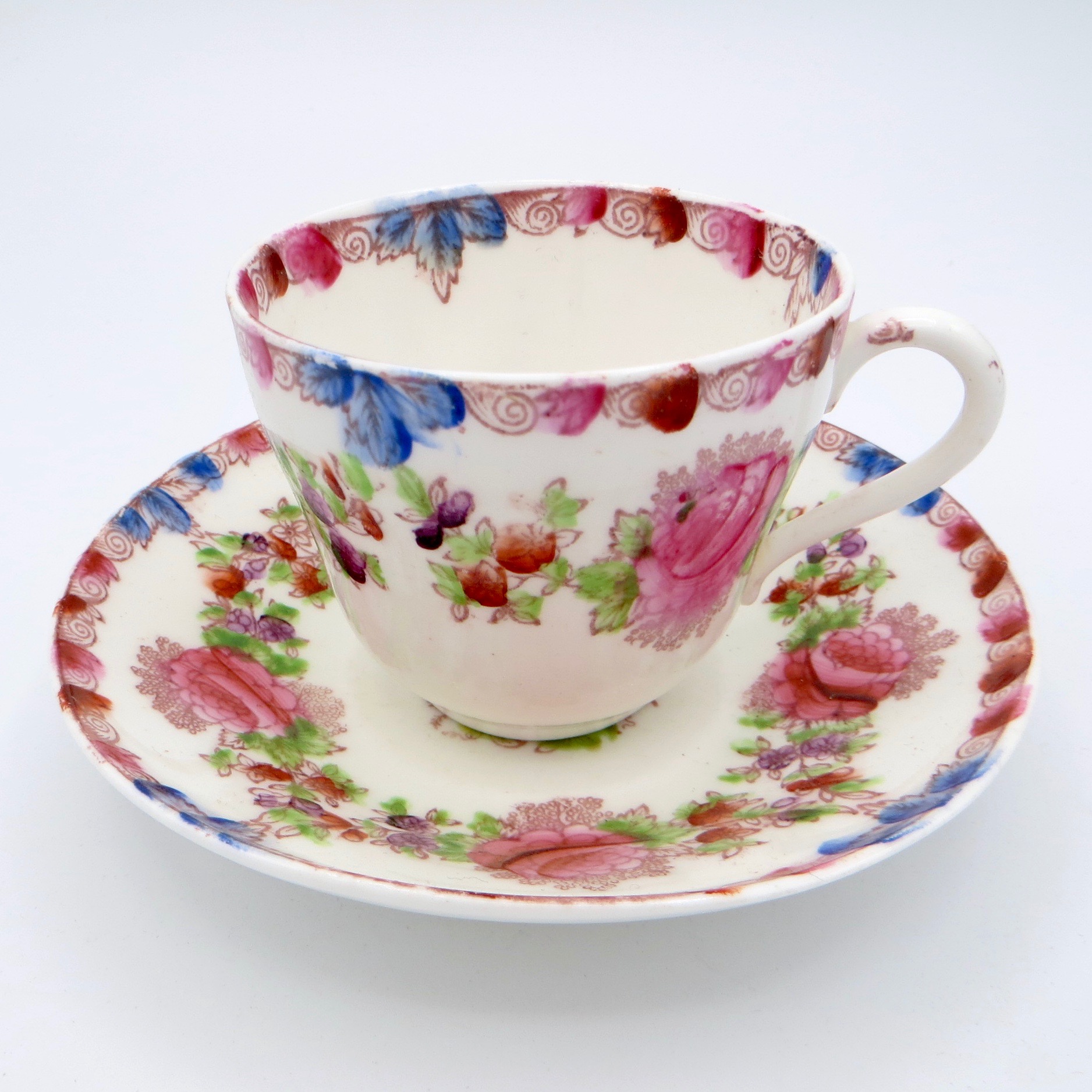
This hand-painted English cup and saucer dates from c.1850. The naive, slightly messy decoration was typical of the cottage industry style commonly found on everyday china.
Here’s a useful guide to dating teacups of the 19th Century.
Whether you prefer an 18th, 19th or 20th century teacup and saucer, don’t be afraid to enjoy them daily — they’ve already lasted a few centuries.
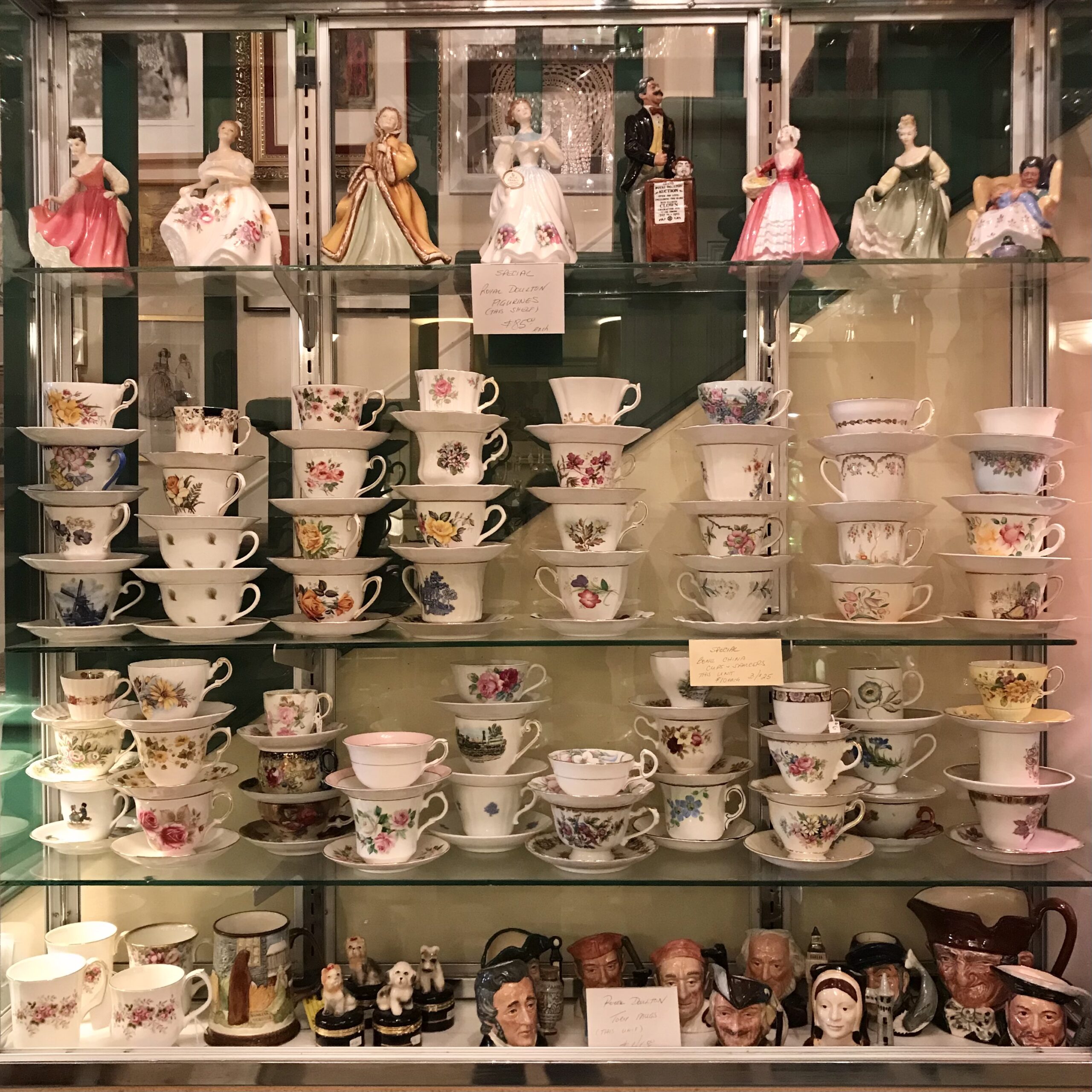
We have a large assortment of cups and saucers in the shop, from a range of time periods.
